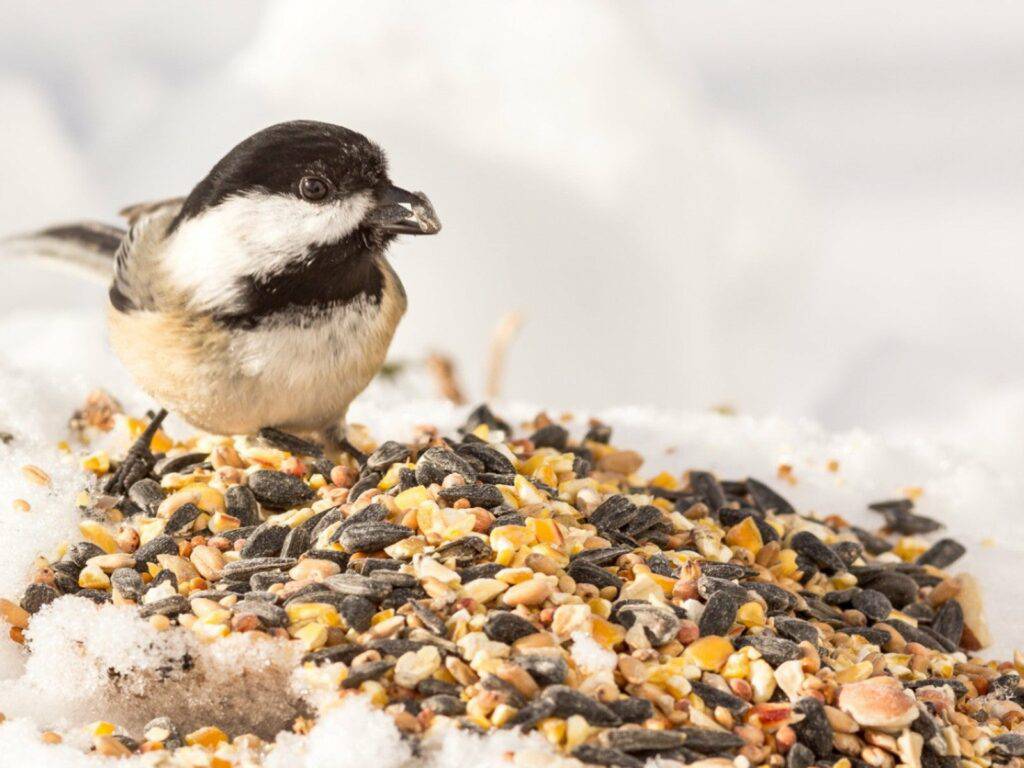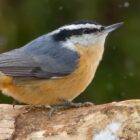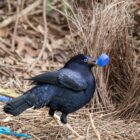Why do some birds weight the seeds they eat?

The act of weighing seeds before consumption is observed in two bird species, in particular Chickadees and Red-breasted Nuthatches. The behavior involves birds assessing the weight or size of seeds before consuming them, raising questions about their motivations and strategies.
The Avian Gourmet: A Glimpse into Bird Diets
The avian world is a culinary wonderland where each species has carved a niche in the gastronomic spectrum. From the insect-hunting acrobatics of swallows to the nectar-sipping elegance of hummingbirds, and the seed-cracking finesse of finches, birds have evolved an impressive array of dietary adaptations. Their beaks, bills, and feeding techniques are finely tuned instruments, each perfectly suited to extract sustenance from their preferred food sources.
In the context of seed-weighing behavior, the focus lies on granivores—birds that specialize in consuming seeds as a primary component of their diet. This dietary choice is not arbitrary but rather a reflection of the ecological niche these birds occupy, as shown in this reseach paper. Granivores are often found in diverse habitats, ranging from grasslands and savannas to forests and urban areas. T
Granivorous birds encompass a wide range of species, from the familiar sparrows and finches to the exotic Gouldian finch and the iconic pigeon. Each species has developed its own set of adaptations to exploit the nutritional bounty found in seeds. The sheer diversity of granivores reflects the rich tapestry of ecosystems around the world, each with its unique set of challenges and opportunities.
Granivores and the Art of Seed Selection
Granivores, by definition, are seed eaters. Their diets predominantly consist of seeds obtained from a wide array of plant species. Yet, the fascinating twist lies not just in the consumption of seeds but in the discerning process that precedes their ingestion.
The granivorous lifestyle is not a one-size-fits-all endeavor. Seeds come in a myriad of shapes, sizes, and nutritional compositions. It is here that the avian intellect comes to the forefront, as birds employ a sophisticated set of criteria to gauge the desirability of a seed before it becomes part of their meal.
One of the key factors in this process is the weight of the seed. The act of weighing seeds is not a mere whimsy; rather, it is a deliberate strategy honed through generations of evolution. Birds possess an innate ability to assess the weight of a seed, a skill that goes beyond the mere physical act of picking up an object. It is an intricate dance of sensory input, instinct, and experience.
This selective behavior is not without purpose. Granivores, with their energy-intensive lifestyles, have evolved to be efficient foragers. In the mosaic of the natural world, where resources are often limited and competition is fierce, the ability to make informed decisions about seed quality is a critical adaptation.
The Weighty Decision: A Seed’s Nutritional Value
Seeds, as the reproductive units of plants, store a wealth of nutrients necessary for the development of a new plant. However, not all seeds are created equal. They vary in size, shape, and most importantly, in their nutritional composition. Granivorous birds, with their refined foraging techniques, have evolved to discriminate between seeds, recognizing the subtle differences that can mean the distinction between mere sustenance and optimal nourishment.
Nutritional Density: The Key to Avian Survival
At the heart of the matter lies the nutritional density of seeds. Birds engage in the meticulous process of seed weighing as a means of discerning which seeds offer the highest concentration of essential nutrients.
Seeds rich in fats, proteins, and carbohydrates are paramount for the survival of granivores, providing the energy required for sustained flight, maintenance of body temperature, and overall metabolic functions.
Granivorous species, ranging from the iconic finches to the unassuming sparrows, have developed an acute sensitivity to the weight of seeds, using it as a reliable indicator of nutritional quality. In essence, the weight of a seed becomes a shorthand for the nutritional payload it carries—an evolutionary shortcut that aids birds in optimizing their foraging efforts.
Fine-Tuning through Evolution: The Avian Gastronomic Legacy
For granivorous birds, the act of weighing seeds is an investment in energy efficiency. By selecting seeds with higher nutritional value, birds reduce the overall quantity of seeds they need to consume to meet their energy requirements.
The ability to weigh seeds and make informed dietary choices is not a trait acquired overnight. It is the result of a protracted evolutionary process that has sculpted the behaviors of granivorous birds over generations. The birds that exhibited a knack for selecting seeds with superior nutritional content were more likely to thrive, reproduce, and pass on their genetic predisposition for discerning seed quality to subsequent generations.
In this way, the ritual of weighing seeds becomes not only a survival strategy but a testament to the enduring legacy of avian gastronomy. The granivorous birds we observe today are the products of eons of fine-tuning, where the weight of a seed became synonymous with the promise of sustenance and vitality.










